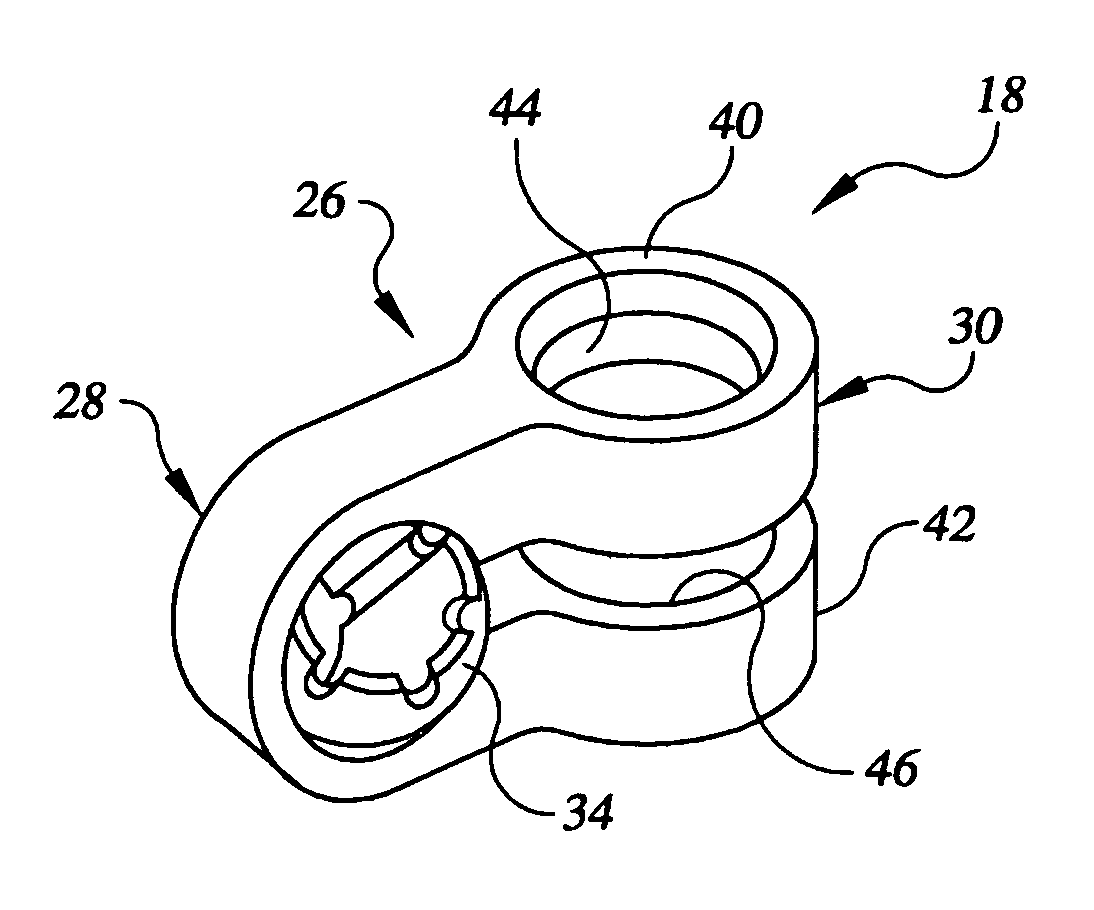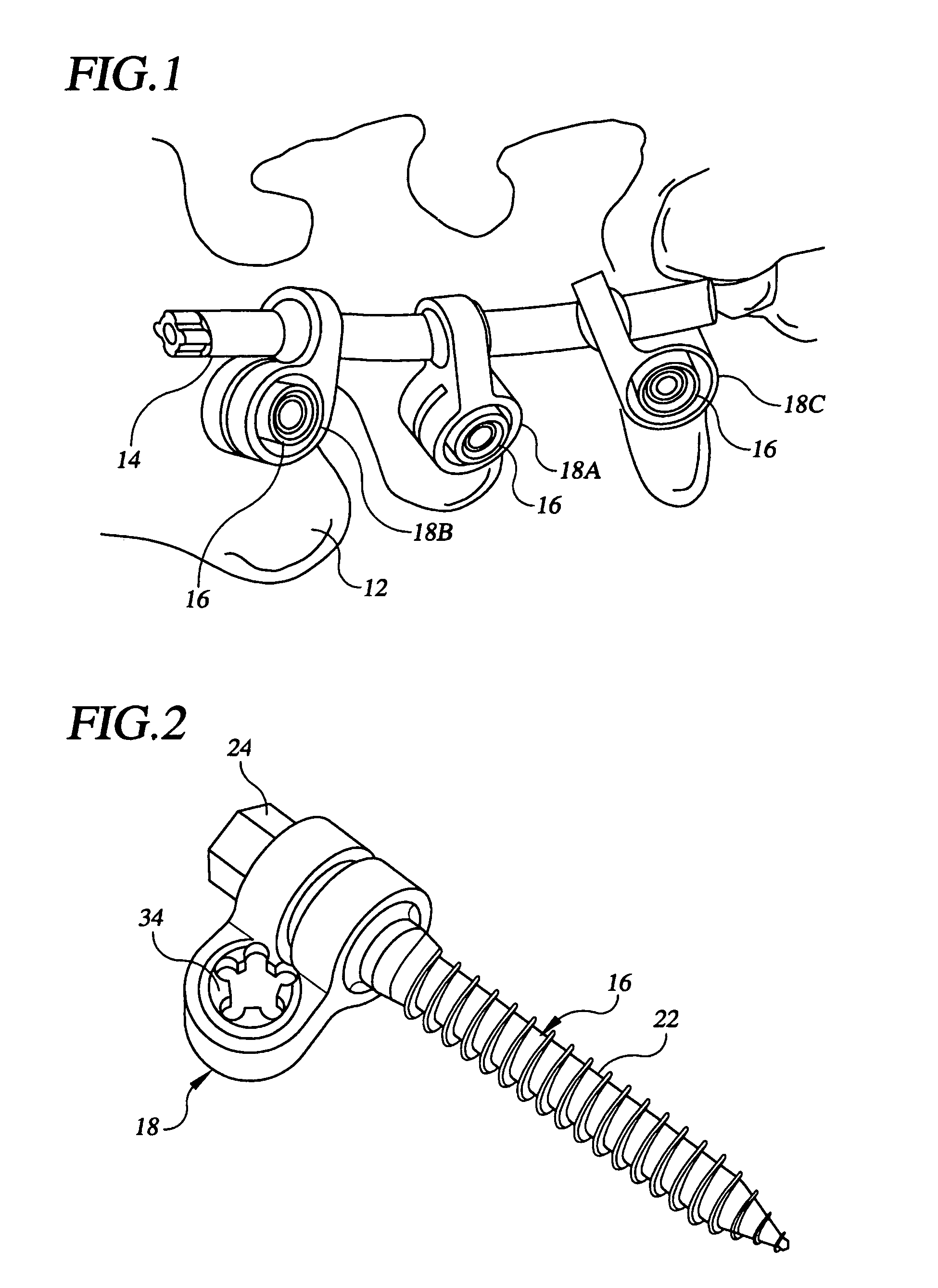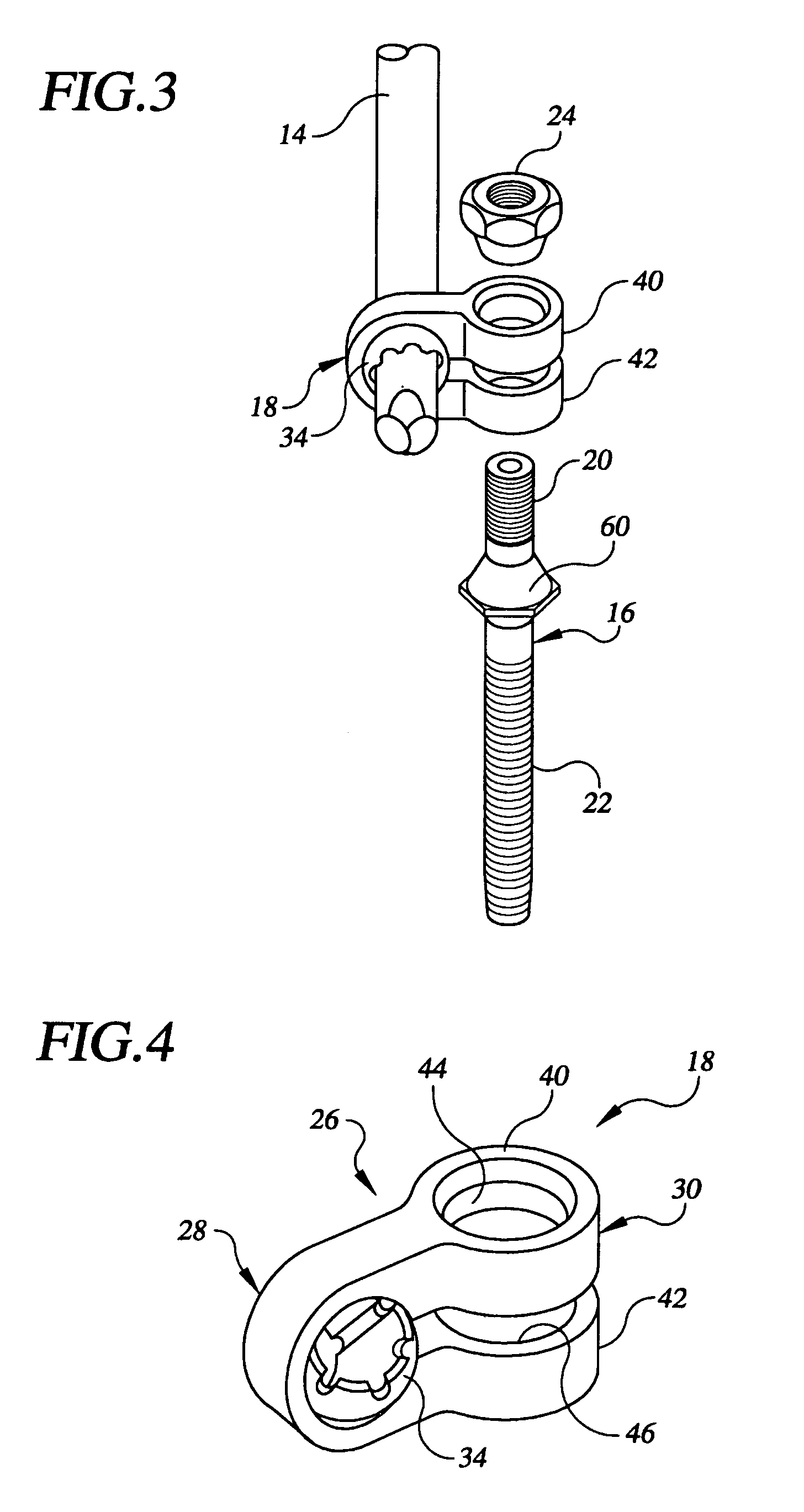Spinal fixation system
a fixation system and spine technology, applied in the field of spine fixation devices, can solve the problems of limiting the range of motion of the spine, threatening the critical elements, and affecting the stability of the spine, and achieve the effect of increasing the locking strength and more uniform collaps
- Summary
- Abstract
- Description
- Claims
- Application Information
AI Technical Summary
Benefits of technology
Problems solved by technology
Method used
Image
Examples
Embodiment Construction
[0021]The following description of the preferred embodiments of the present invention is merely exemplary in nature and is in no way intended to limit the subject invention or its application or uses.
[0022]With general reference to the drawings, a spinal fixation system constructed in accordance with the teachings of the preferred embodiment of the present invention is illustrated and generally identified at reference character 10. As shown in the environmental view of FIG. 1, components of the system 10 have been arranged in an exemplary construct for attachment to a portion of a spinal column 12 of a human patient. The components of the system 10 of the present invention used in the construct of FIG. 10 generally include a linkage in the form of a generally cylindrical support rod 14, a plurality of spinal anchors 16 for engaging the spinal column 12, and a plurality of clamp assemblies 18 securing the spinal anchors 16 to the cylindrical rod 14.
[0023]The spinal anchors are illust...
PUM
 Login to View More
Login to View More Abstract
Description
Claims
Application Information
 Login to View More
Login to View More - R&D
- Intellectual Property
- Life Sciences
- Materials
- Tech Scout
- Unparalleled Data Quality
- Higher Quality Content
- 60% Fewer Hallucinations
Browse by: Latest US Patents, China's latest patents, Technical Efficacy Thesaurus, Application Domain, Technology Topic, Popular Technical Reports.
© 2025 PatSnap. All rights reserved.Legal|Privacy policy|Modern Slavery Act Transparency Statement|Sitemap|About US| Contact US: help@patsnap.com



